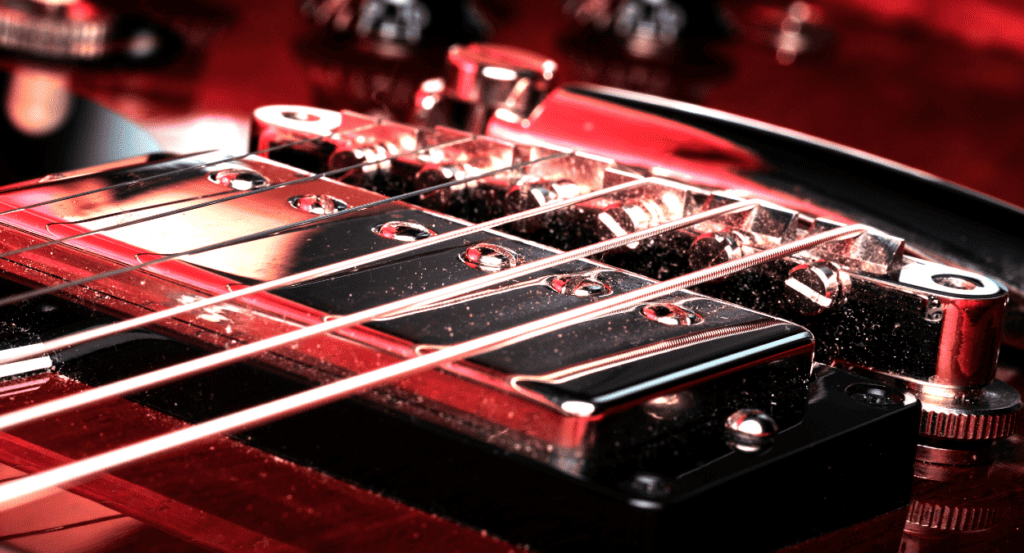Every guitarist knows that the quest for the perfect sound is a lifelong journey. Whether you’re a seasoned musician or just picking up the guitar, the desire to capture that pristine tone in your recordings is a universal pursuit. Yet, amidst the strings and amplifiers, an insidious adversary often lurks – noise. Unwanted hisses, hums, chirps, clicks, and buzzes can sabotage even the most inspired performances.
But fear not, for in this article, we’ll learn how to remove noise from guitar recordings. We’ll explore five indispensable strategies that will empower you to banish noise from your guitar recordings once and for all. From the very source of your signal to the final recording stage, we’ll unveil the secrets to achieving noise-free guitar magic.
So, whether in a studio, a cozy home setup, or jamming in your garage, read on and equip yourself with the knowledge to ensure your guitar’s voice rings out in all its pure, unadulterated glory. It’s time to turn up the volume on your guitar signal while silencing the noise that tries to steal the spotlight.

Table of Contents
Key Takeaways:
- Lower noise at the source by adding shielding inside your guitar and using high-quality cables.
- Manage your power source to prevent ground loops and ensure all equipment shares the same electrical phase.
- Eliminate ground loops using transformers to isolate audio sources, eliminating unwanted hum.
- Consider using buffers to reduce noise in high-impedance guitar circuits while maintaining tonal integrity.
- When recording without a microphone, use the direct input (DI) method, optimize your playing technique, and employ EQ and effects for post-recording modifications.
Why Does My Guitar Sound So Loud?
When you’re recording your acoustic guitar, you may wonder why it sounds louder than expected. This can be due to various factors, including the choice of microphone and the proximity of the mic to the guitar.
The microphone type plays a crucial role. Dynamic microphones can reject background noise, making your guitar sound louder and clearer. Condenser microphones, while more sensitive, can pick up more ambient noise.
Additionally, the microphone placement matters. Placing the mic closer to the guitar’s soundhole will capture more volume, while moving it away can reduce the perceived loudness. Experiment with mic placement to find the perfect balance.
5 Ways to Remove Noise from Guitar Recordings
When it comes to recording your beloved guitar, unwanted noise can be a frustrating hurdle. To ensure your recordings are as clean and noise-free as possible, here are five essential ways to remove noise from your guitar recording:
1. Lowering Noise at the Source
Noise often creeps into your recordings at the very beginning, right at the source – your guitar. Electric guitars are high-impedance devices, which makes them susceptible to interference and noise. To combat this, consider adding a copper or foil shield inside the cavity of your guitar. Shielding your guitar is a fairly simple guitar upgrade that has a huge impact on your sound.
Copper shielding with adhesive backing works well. Ensure it’s tightly pressed against the wood to avoid electrical shorts. Shield the pickguard if you have a guitar with that feature.
Then, connect all the shields together and ground them at the guitar jack. This creates a protective shell around your electronics, blocking out electromagnetic interference from power supplies and other sources.
Using high-quality coaxial guitar cables is another effective measure. These cables often feature a nonconductive plastic layer over the conductor and a copper shield, minimizing microphonics or self-noise when the cable is moved or stepped on.
A properly maintained guitar will produce less noise at recordings. Clean the knobs and wiring once in a while, and see for yourself.
2. Managing Your Power Source
Ground loops are a common source of noise in guitar setups. These loops occur when different components in your rig have slightly different electrical potentials, causing unwanted hum and buzz.
To address this issue, connect all your amplifiers and effects to a common power bar or a rack-mount power source equipped with surge protection. This ensures that all your equipment receives power from the same electrical circuit, reducing the risk of ground loops. In older homes with inconsistent wiring, this practice can be especially valuable.
3. Eliminating Ground Loops
Ground loops are the bane of many guitarists’ existence, introducing 50 or 60 cycle hum into your recordings. The best way to eliminate ground loops is by isolating the audio sources from each other using transformers. Transformers function as magnetic bridges, passing only alternating current (AC) while blocking direct current (DC).
This effectively removes any problematic DC noise from the signal. Not all transformers are created equal, and high-quality transformers, like those from companies such as Jensen, are designed to maintain signal integrity without introducing phase shift or distortion.
4. Buffers and Managing Impedance
Electric guitars have high impedance, making them more susceptible to noise. Buffers can be your best friend in this situation.
A buffer is a unity gain amplifier that doesn’t boost the signal but lowers its impedance, reducing noise. However, not all buffers are created equal. Many use integrated circuits (ICs or chips) that can introduce undesirable characteristics.
Opt for buffers with discrete components (individual transistors, resistors, and capacitors) and class-A circuitry. Radial buffers are known for maintaining the tonal integrity of the original signal while effectively reducing noise.
5. Plugging It All Together
Certain guitar effects, like fuzz pedals and wah-wahs, can directly interact with your guitar’s pickup. Adding a buffer to your signal chain can sometimes change the way these effects sound. Instead of inserting a buffer, you can employ effects loop pedals like the BigShot EFX. These pedals allow you to remove your fuzz and wah-wah from the circuit when they’re not in use, preserving their original sound. Additionally, devices like the BigShot ABY, Twin City, or Switchbone incorporate isolation transformers to eliminate ground loops, ensuring a noise-free experience.
By implementing these five strategies, you can significantly reduce noise in your guitar recordings, allowing your music to shine without unwanted interference.
Is It Better To Record the Guitar With Mic or Direct?
The age-old question: Should you record your guitar with a microphone or go direct? It depends on your preferences and the sound you want to achieve.
Recording with a microphone captures the natural acoustic sound of your guitar, preserving its nuances and warmth. However, it can also pick up room noise and may require a treated recording environment.
Going direct eliminates room noise and interference, offering a clean and controlled signal. However, it can sound somewhat thin and lack the depth and character of a mic’d recording.
Ultimately, the choice between mic and direct recording depends on your desired sound and the recording conditions available to you.
How Can I Record My Guitar Without a Mic?
Recording your guitar without using a microphone involves capturing the sound directly from your guitar’s pickup or using alternative methods to achieve a clean and noise-free recording. Here’s a step-by-step guide on how to do it:
Use a Direct Input (DI)
The primary method for recording your guitar without a microphone is to use a Direct Input (DI) box. A DI box allows you to connect your guitar directly to a mixer, audio interface, or recording device. It takes the signal directly from your guitar’s pickup and converts it into a balanced line-level signal suitable for recording. This method eliminates room noise and provides a clean, direct signal from your guitar.
Choose the Right Pickup
If your acoustic guitar is equipped with a pickup system, make sure to select the appropriate pickup. Many acoustic-electric guitars come with built-in pickups that can be connected directly to an amplifier or audio interface. These pickups are designed to capture the sound of the strings without the need for a microphone.
Opt for Noiseless Pickups
On electric guitars, humbuckers are quieter (noise-wise) than single coils, and the 2 and 4 positions on S-style guitars are effectively humbuckers. Additionally, there are some really good noiseless single-coil pickups you can try.

Use EQ and Effects
To shape and enhance the recorded sound, consider using equalization (EQ) and effects. Most audio interfaces and recording software offer built-in EQ and effects plugins that allow you to adjust the tone, add reverb, or apply other audio enhancements to your guitar signal.
Practice Good Playing Technique
Minimize unwanted noises during recording by focusing on your playing technique. Avoid excessive string buzz, fret noise, tapping on the guitar body while recording. There are even effective ways to eliminate pick chirp without too much hassle. A clean and controlled playing technique can contribute to a noise-free recording.
Recording your guitar without a microphone is convenient, especially when you want a direct and controlled signal. Whether you’re using a DI box, magnetic pickups, or the built-in pickup of your acoustic-electric guitar, these methods allow you to capture the natural sound of your instrument without the interference of room noise.
Using EQ and effects can also help tailor the recorded sound to your preferences, making it a versatile and reliable recording approach.
Conclusion
In the music world, capturing the perfect guitar sound is a pursuit that every guitarist and recording enthusiast shares. While the road to pristine guitar recordings may have twists and turns, armed with the knowledge of these five essential noise-reduction strategies, you’re better equipped to navigate the journey.
Remember, noise is the adversary of clarity, but with careful attention to shielding, power management, and smart signal routing, you can triumph over unwanted interference. Whether you choose to record directly, embrace the warm embrace of a microphone, or venture into the realm of DI recording, your guitar’s voice can shine through.
So, set the stage, plug in, and let your music be heard, crystal clear and free from the clutches of noise. Your guitar’s purest tones are waiting to be unleashed, and now, you have the keys to unlock them. Happy recording!